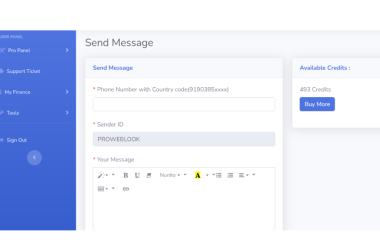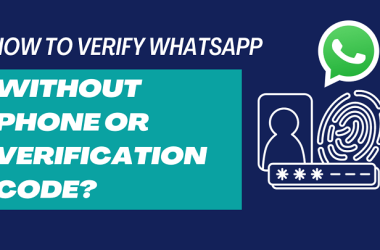Introduction.
Text-to-Speech Technology: In the ever-evolving landscape of technology, innovations continue to reshape the way we interact with digital content. One such innovation that has revolutionized communication and accessibility is Text-to-Speech (TTS) technology. Text-to-Speech technology converts written text into spoken words, enabling users to listen to written content through audio output. From enhancing accessibility for individuals with visual impairments to facilitating language learning and content consumption, Text-to-Speech technology has far-reaching implications across various domains. In this comprehensive guide, we delve into the intricacies of Text-to-Speech technology, exploring its functionalities, applications, and impact in the digital age.
Understanding Text-to-Speech Technology.
At its core, Text-to-Speech technology converts textual input into audible speech output using synthetic speech generation techniques. The process involves several steps:
1. Text Analysis: The Text-to-Speech engine analyzes the input text, segmenting it into individual words, phrases, and sentences. It also identifies punctuation marks, formatting cues, and other linguistic elements to enhance naturalness and clarity in speech synthesis.
2. Phonetic Encoding: The engine converts textual representations of words into phonetic representations, which define how words are pronounced phonetically. This step involves mapping text-to-speech rules, phonetic dictionaries, and pronunciation guidelines to ensure accurate speech synthesis.
3. Speech Synthesis: Using a combination of linguistic rules, acoustic models, and prosodic cues, the Text-to-Speech engine generates synthetic speech output that mimics human speech patterns, intonation, and rhythm. Advanced synthesis techniques may incorporate machine learning algorithms and neural networks to improve speech quality and naturalness.
4. Audio Rendering: The synthesized speech output is converted into digital audio waveforms, which are then played through audio output devices such as speakers, headphones, or assistive listening devices. Audio rendering parameters such as volume, pitch, and speed may be adjustable to accommodate user preferences.
Key Features and Functionalities of Text-to-Speech Technology.
Text-to-Speech technology offers a range of features and functionalities designed to enhance accessibility, convenience, and user experience:
1. Multi-language Support: Text-to-Speech engines support multiple languages and dialects, enabling users to convert text into speech in their preferred languages. This feature is invaluable for global communication, language learning, and multilingual content consumption.
2. Voice Customization: Users can choose from a variety of voices, accents, and speaking styles to customize their Text-to-Speech experience. Voice customization options cater to diverse user preferences and accessibility needs, ensuring personalized and engaging speech synthesis.
3. Naturalness and Intonation: Advanced Text-to-Speech engines incorporate natural language processing (NLP) techniques to enhance speech naturalness, intonation, and expressiveness. Prosodic features such as emphasis, pitch variation, and rhythm contribute to lifelike speech synthesis that closely resembles human speech patterns.
4. Speed and Pitch Control: Users can adjust the speed and pitch of synthesized speech to suit their listening preferences and comprehension levels. Speed and pitch control features enhance accessibility for users with different cognitive abilities, learning styles, and reading speeds.
5. Text Highlighting and Synchronization: Text-to-Speech applications often include text highlighting and synchronization features, which visually highlight spoken words or phrases in real-time as they are being spoken. This visual feedback aids in comprehension, language learning, and following along with the spoken text.
Applications of Text-to-Speech Technology.
The versatility of Text-to-Speech technology enables its application across various domains and industries:
1. Accessibility and Assistive Technology: Text-to-Speech technology enhances accessibility for individuals with visual impairments, learning disabilities, or other accessibility needs. Screen readers and assistive technology devices use Text-to-Speech technology to convert digital text into spoken audio, enabling users to access and navigate digital content independently.
2. Language Learning and Education: Text-to-Speech technology supports language learning and literacy development by providing auditory reinforcement and pronunciation assistance. Language learners can listen to spoken text, practice pronunciation, and improve language comprehension skills through interactive learning applications and educational resources.
3. Content Consumption and Media Accessibility: Text-to-Speech technology facilitates content consumption for users on-the-go or in situations where reading may be impractical or inconvenient. Users can listen to news articles, blog posts, eBooks, and other digital content through Text-to-Speech-enabled devices, enhancing multitasking and productivity.
4. Communication and Human-Machine Interaction: Text-to-Sound technology powers voice-enabled interfaces, virtual assistants, and chatbots, enabling natural and intuitive human-machine interaction. Voice-activated devices and applications respond to spoken commands, queries, and requests, enhancing user engagement and convenience in diverse contexts.
5. Entertainment and Audio Content Creation: Text-to-Speech technology fuels the creation of audio books, podcasts, voiceovers, and other forms of audio content. Content creators can leverage Text-to-Speech engines to narrate stories, deliver information, and entertain audiences with synthesized speech output.
Challenges and Considerations in Text-to-Speech Technology.
While Text-to-Speech technology offers numerous benefits, several challenges and considerations must be addressed:
1. Speech Quality and Naturalness: Achieving natural-sounding speech synthesis remains a challenge, particularly for complex languages, accents, and intonations. Improving speech quality and naturalness requires advancements in speech synthesis algorithms, voice modeling techniques, and linguistic processing capabilities.
2. Accent and Pronunciation Variability: Text-to-Speech engines may struggle with accurately reproducing regional accents, dialects, and pronunciation variations. Addressing accent and pronunciation variability requires comprehensive phonetic coverage, accent-specific training data, and dialect adaptation techniques.
3. Contextual Understanding and Disambiguation: Text-to-Speech engines must accurately interpret and disambiguate textual input to produce coherent and contextually appropriate speech output. Enhancing contextual understanding requires advancements in natural language processing (NLP), semantic analysis, and discourse modeling.
4. Emotional and Expressive Speech Synthesis: Capturing emotions, nuances, and expressiveness in synthesized sound remains a challenge for Text-to-Sound technology. Advancements in emotional speech synthesis, affective computing, and prosody modeling are needed to enable lifelike and emotionally engaging speech synthesis.
5. Privacy and Data Security: Text-to-Sound technology raises privacy and data security concerns related to voice data collection, storage, and usage. Protecting user privacy, obtaining consent for data collection, and implementing robust data security measures are essential considerations for Text-to-Speech applications.
Conclusion.
Text-to-Sound technology represents a transformative advancement in digital communication, accessibility, and interaction. By converting written text into spoken words, Text-to-Sound technology empowers individuals to access information, communicate effectively, and engage with digital content in new and innovative ways. As Text-to-Sound technology continues to evolve, addressing challenges related to sound quality, accent variability, contextual understanding, and privacy will be essential for unlocking its full potential. Ultimately, Text-to-Sound technology holds the promise of bridging linguistic barriers, enhancing accessibility, and enriching human-machine interaction in the digital age.
Visit Proweblook for more Web API tools. More resources can be found on our Github page, Social Channels are Twitter, Facebook & Youtube.








